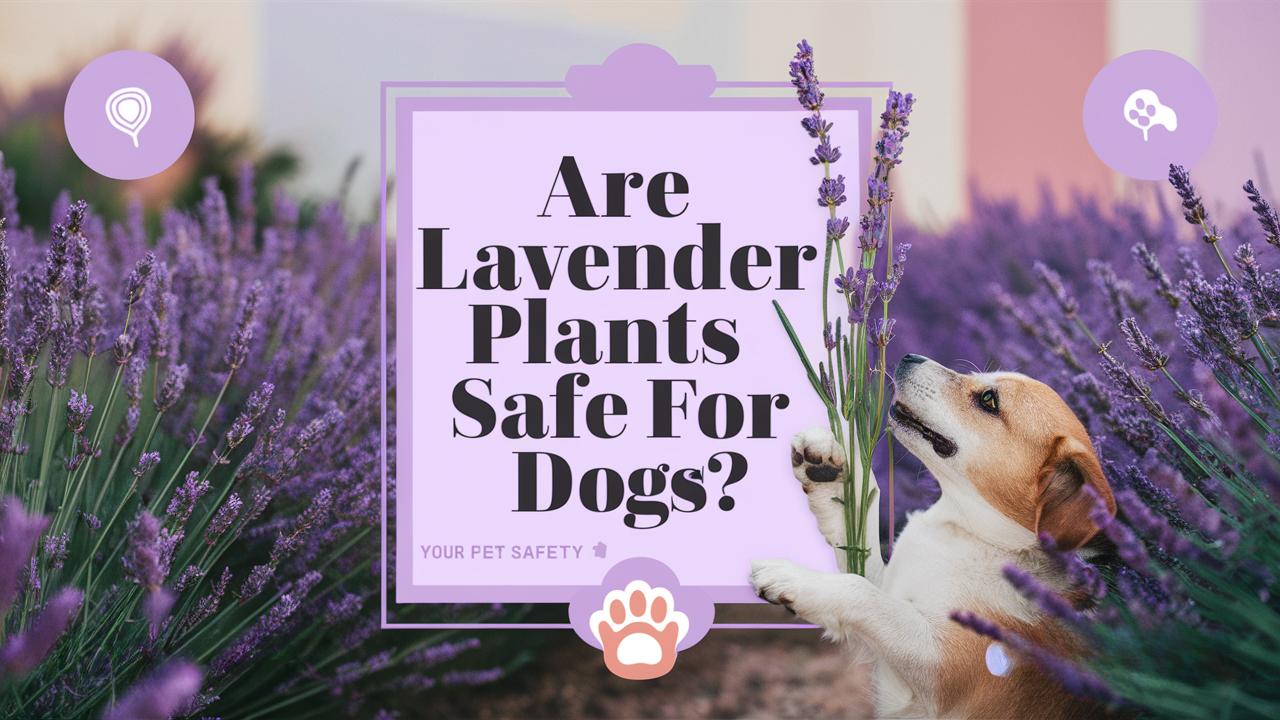This guide will explore the relationship between dogs and lavender, detailing its safety, potential benefits, side effects, and much more.
Are Lavender Plants Toxic to Dogs?

The primary concern for dog owners is whether lavender is toxic to their furry friends. The American Society for the Prevention of Cruelty to Animals (ASPCA) states that lavender is generally non-toxic to dogs. However, it is crucial to note that while lavender itself is not poisonous, certain forms and concentrations can pose risks.
Forms of Lavender

Lavender Plants: When grown as a garden plant, lavender is considered safe for dogs to be around. If a dog sniffs or even nibbles on a lavender plant, it is unlikely to cause immediate harm. Still, ingestion in large quantities might lead to some gastric upset due to the plant’s essential oils.
Lavender Essential Oil: This is where caution is warranted. Essential oils are concentrated extracts from plants, and lavender oil is no exception. Dogs can exhibit a range of sensitivities to essential oils, with the potential for allergic reactions. It is advisable to keep lavender essential oil out of reach of pets and avoid applying it directly to their skin.
Lavender Products: Many commercial products, such as perfumes, soaps, and shampoos, contain lavender. Always check the ingredients and avoid using any product on your dog that contains concentrated lavender oil.
Symptoms of Lavender Toxicity
While lavender is not toxic, overconsumption could lead to mild symptoms. If your dog has ingested a significant amount of lavender, monitor for signs of discomfort, such as:
Vomiting
Diarrhea
Decreased appetite
Lethargy
If you observe any unusual behavior or symptoms, it’s best to consult a veterinarian as a precaution.
Potential Benefits of Lavender for Dogs

Despite its potential risks, lavender can offer some benefits to dogs in specific circumstances. Let’s explore how lavender can be beneficial to our canine companions.
Calming Effects
Many pet owners have noted their dogs responding positively to the soothing scent of lavender. It’s believed that the aroma can help reduce anxiety in some dogs, particularly during stressful situations such as thunderstorms, fireworks, or vet visits. Lavender can be used in various ways to create a calming environment for dogs:
Diffusers: Using a lavender essential oil diffuser can create a calming atmosphere. However, ensure the room is well-ventilated, and the dog has the option to move away from the scent if desired.
Calming Sprays: Some pet products incorporate lavender oil in calming sprays designed for dogs. These sprays can be lightly misted on bedding or in their comfort areas to promote relaxation.
Baths: A lavender-infused bath can be a soothing experience for a dog. Look for pet-safe lavender shampoos or create your own infusion using dried lavender buds.
Flea and Tick Prevention
While the need for more research exists in this area, some anecdotal evidence suggests that lavender may help repel fleas and ticks. Dogs that are naturally sensitive to chemical treatments often benefit from alternative methods. Incorporating lavender into their grooming routine, perhaps through the use of lavender-scented shampoos or sprays, might help keep nuisances at bay.
Skin Conditions
Certain skin issues in dogs, such as irritations and minor cuts, may benefit from lavender’s anti-inflammatory properties. Lavender oil has antiseptic qualities, making it a popular natural remedy. However, it’s crucial to dilute lavender oil properly before application, as undiluted essential oils can cause skin irritation.
Caution: Potential Risks and Side Effects

As with any herb or natural remedy, caution is necessary when introducing lavender to your dog’s routine. Here are some points to consider to ensure your dog’s safety:
Allergies and Sensitivities
Some dogs may have allergies or sensitivities to lavender. If you witness any signs of an allergic reaction, such as skin irritation, swelling, or trouble breathing, remove the source immediately and seek veterinary advice.
Pregnancy and Nursing
Pregnant or nursing dogs should be treated with care regarding the use of lavender. High doses of lavender oil, in particular, can affect hormonal balance and might not be the best choice during these sensitive times.
Interactions with Medications
Lavender can interact with certain medications, particularly those that affect the central nervous system. If your dog is on medication, consult your veterinarian before introducing lavender into their regimen.
Overdose Risks
While lavender isn’t generally toxic, large quantities can cause gastrointestinal discomfort. Ensure your dog does not have access to large amounts of the plant, especially if it’s growing in your garden.
Creating a Lavender-Friendly Environment

If you’re keen on incorporating lavender into your home and garden while ensuring safety for your dog, consider the following guidelines:
Plant Location
When planting lavender in your garden, consider its placement. Keep it in an area where your dog doesn’t typically roam or dig. This will minimize the chances of them chewing on the plant, which can lead to gastrointestinal issues.
Alternatives to Lavender

If you’re unsure about lavender or if it doesn’t suit your pet’s needs, many other calming herbs can be safely introduced to dogs:
Chamomile: Known for its calming effects, chamomile can be a great alternative.
Green Tea: Brewed and cooled green tea can also have a calming effect, but be sure to monitor caffeine levels.
Valerian Root: This herb has sedative properties, ideal for relieving anxiety in both humans and pets.
Summary: A Balanced Approach to Lavender Around Dogs
In conclusion, lavender can be safe for dogs when approached with care. While the plant itself poses minimal risk, caution should be exercised with lavender essential oil and concentrated forms. Lavender has its benefits, particularly regarding relaxation and anxiety reduction, but pet owners must stay vigilant for any adverse reactions.





